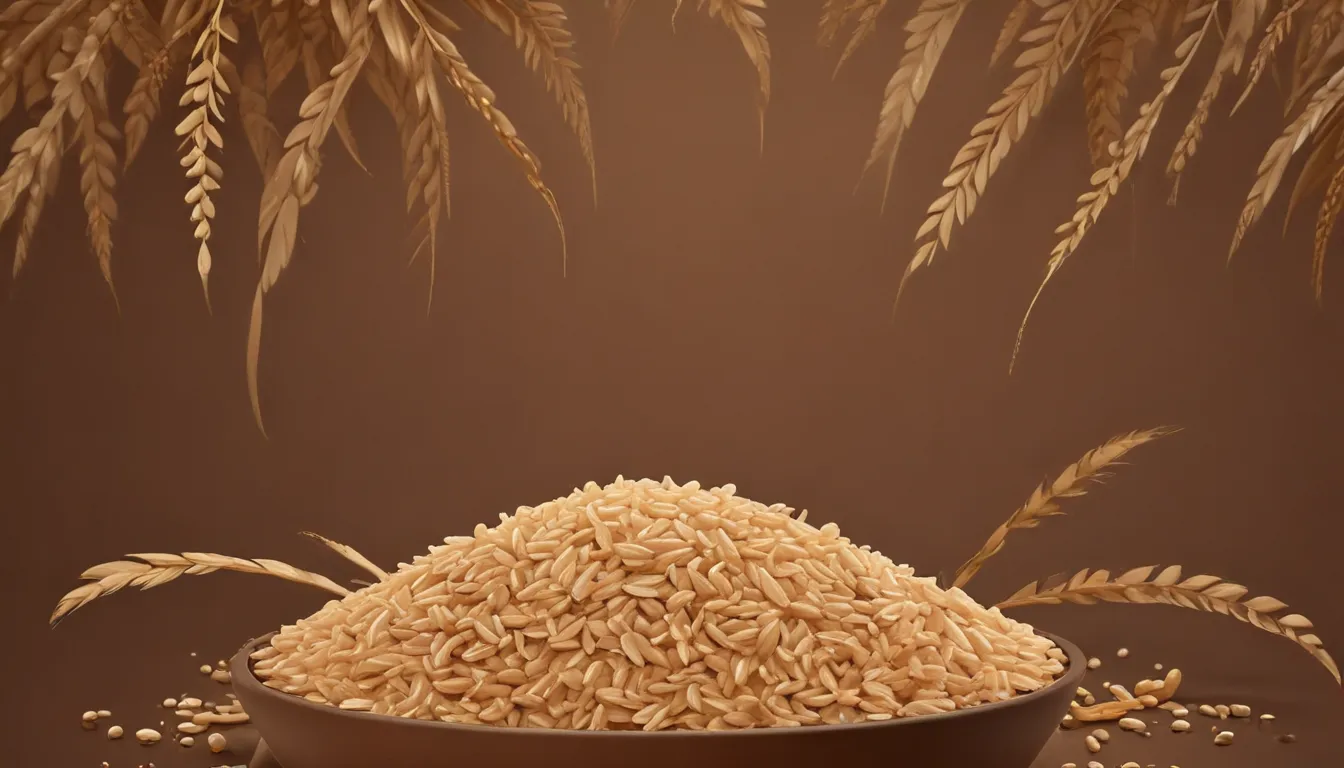The pictures in our articles might not always show exactly what the text is talking about. We use these images to make the article more interesting and eye-catching. They are there to add to the text, but not to replace it or show every detail.
If you're looking to add a nutritious and versatile ingredient to your diet, look no further than short grain brown rice. This variety of brown rice offers a range of health benefits, from supporting weight management to boosting heart health. In this article, we'll delve into the nutritional value of short grain brown rice and explore why it's a great addition to a well-rounded diet.
Why Choose Short Grain Brown Rice?
Short grain brown rice is not only delicious but also packed with essential nutrients that promote overall health. With its tender texture, slightly sticky consistency, and nutty flavor, it serves as a versatile ingredient in a variety of dishes. Let's take a closer look at ten key nutrition facts about short grain brown rice that highlight its importance in maintaining a healthy lifestyle.
Low in Calories and Fat
One of the key benefits of short grain brown rice is its low calorie and fat content. With approximately 215 calories and less than 1 gram of fat per cooked cup, it's a satisfying and guilt-free option for individuals looking to manage their weight.
High in Fiber
Short grain brown rice is rich in dietary fiber, with around 3.5 grams per cooked cup. This fiber content helps regulate bowel movements, promote gut health, and contribute to a feeling of fullness, making it an excellent choice for those looking to maintain a healthy digestive system.
Packed with Vitamins and Minerals
In addition to its fiber content, short grain brown rice is a great source of essential vitamins and minerals. It contains significant amounts of B vitamins such as thiamin, niacin, and vitamin B6, which are important for energy production and maintaining a healthy nervous system.
Rich in Antioxidants
Antioxidants play a crucial role in protecting the body against oxidative stress and inflammation. Short grain brown rice contains antioxidants like phenolics and flavonoids, which have been linked to reducing the risk of chronic diseases such as heart disease and certain cancers.
Low Glycemic Index
Short grain brown rice has a lower glycemic index compared to its white counterpart, making it a better option for managing blood sugar levels and overall insulin response. This can be particularly beneficial for individuals looking to support their heart health and reduce the risk of chronic diseases.
Boosts Heart Health
Regular consumption of short grain brown rice has been associated with a lower risk of heart disease. Its fiber content helps maintain healthy cholesterol levels, while the presence of antioxidants and other beneficial compounds supports cardiovascular health.
Supports Weight Management
Thanks to its high fiber content, short grain brown rice can help you feel fuller for longer, aiding in weight management and preventing overeating. It provides essential nutrients without adding excessive calories, making it a great addition to a balanced diet.
Gluten-Free Alternative
For individuals with gluten sensitivities or celiac disease, short grain brown rice is a safe and nutritious alternative to gluten-containing grains like wheat, barley, and rye. It serves as a versatile ingredient that can be incorporated into a variety of gluten-free dishes.
Versatile in Cooking
Short grain brown rice is incredibly versatile and can be used in a wide range of dishes. Whether cooked on its own as a tasty side dish, added to soups and stews, or used to make sushi rolls, it adds a delicious and nutritious element to your meals.
Sustainable and Environmentally Friendly
Choosing short grain brown rice can have a positive impact on the environment. Unlike conventional rice farming, which often requires excessive water usage and contributes to greenhouse gas emissions, sustainable methods of growing brown rice promote eco-friendly agricultural practices.
Conclusion
In conclusion, short grain brown rice is a nutritional powerhouse that offers a range of health benefits. From supporting weight management to boosting heart health, this versatile whole grain is a valuable addition to any diet. Incorporating short grain brown rice into your meals can improve digestion, provide sustainable energy, and contribute to overall well-being. Next time you're planning a meal, consider reaching for short grain brown rice as a delicious and nutritious option.
FAQs
- Is short grain brown rice a good source of fiber?
-
Yes, short grain brown rice is an excellent source of fiber. It helps regulate digestion, maintain bowel regularity, and promote feelings of fullness.
-
Can short grain brown rice help with weight management?
-
Absolutely! Its high fiber content contributes to a feeling of fullness, aiding in weight management.
-
Is short grain brown rice gluten-free?
-
Yes, it is naturally gluten-free, making it a safe option for individuals with gluten sensitivities.
-
How should I cook short grain brown rice?
-
Use a 2:1 ratio of water to rice, boil the water, add the rice, reduce heat, cover, and simmer for about 45 minutes.
-
Can short grain brown rice be reheated?
- Yes, simply add a splash of water, cover, and reheat in the microwave or stovetop until heated through.
Whether you're looking to improve your overall health or simply add a flavorful ingredient to your meals, short grain brown rice is a fantastic choice. With its nutritional value, versatility in cooking, and environmental benefits, it's a smart and delicious addition to any diet. Start exploring the world of short grain brown rice today and reap the many rewards it has to offer.






